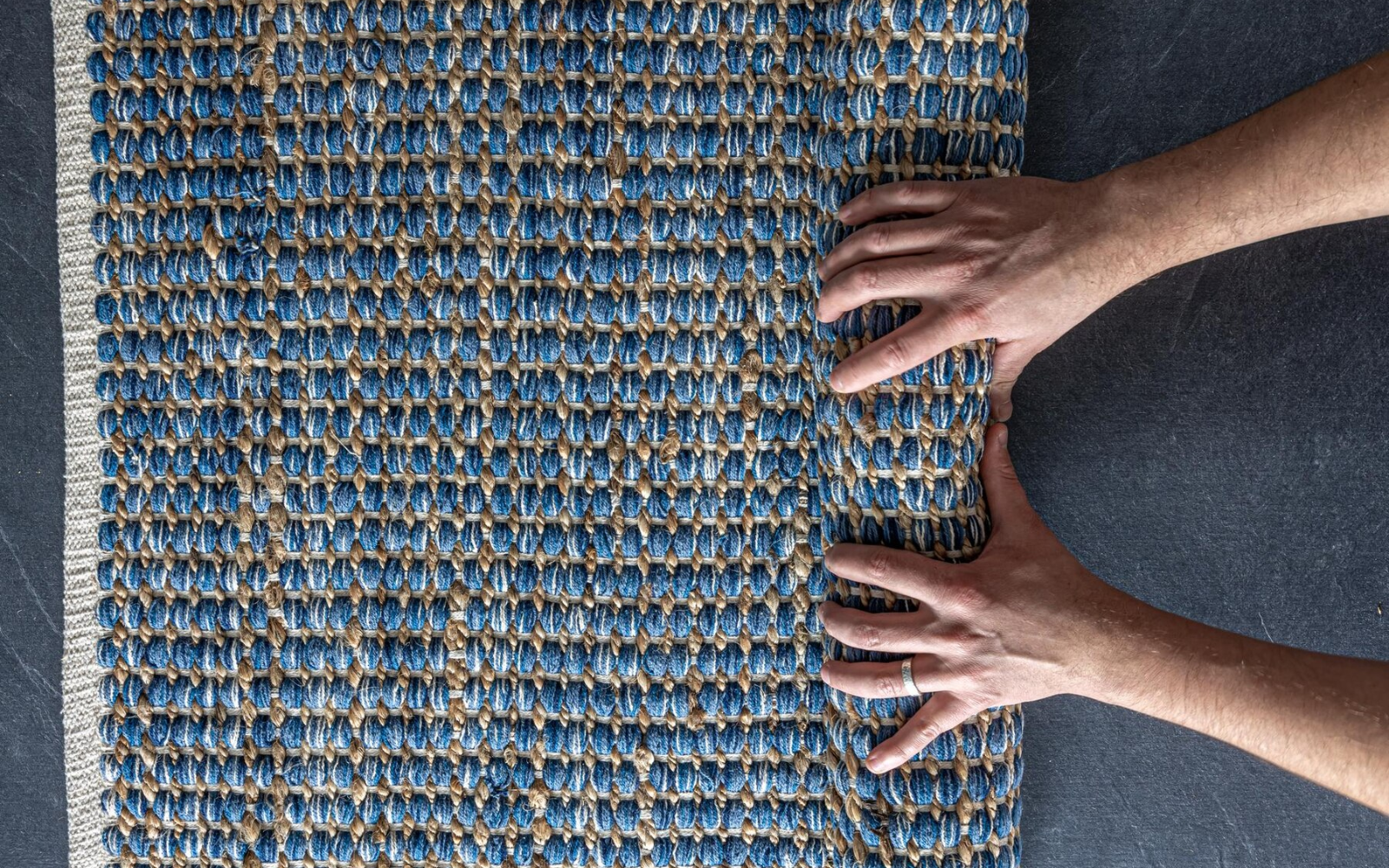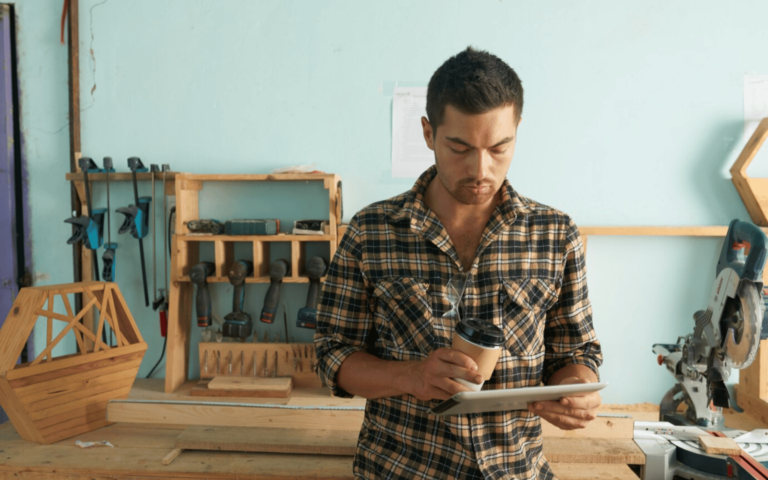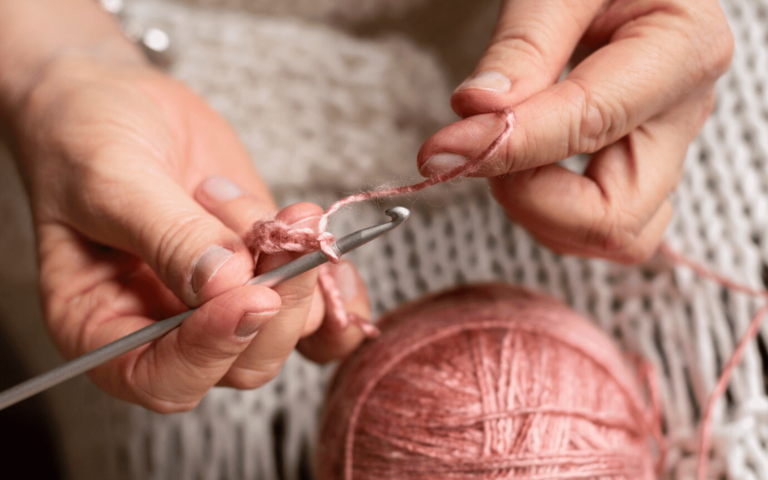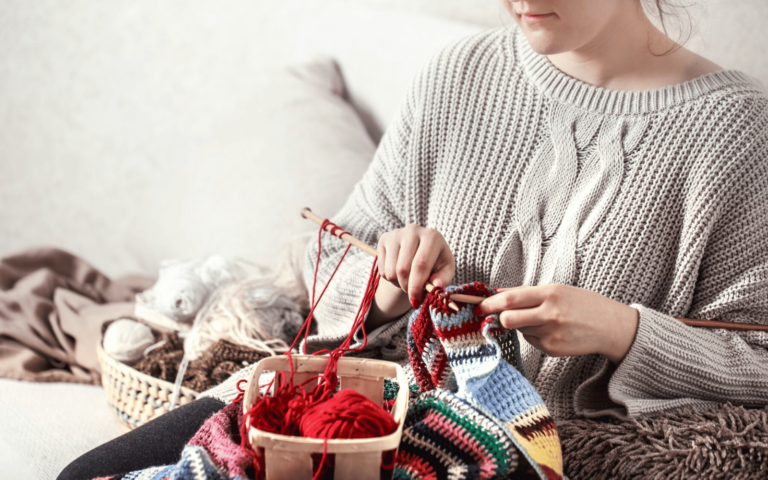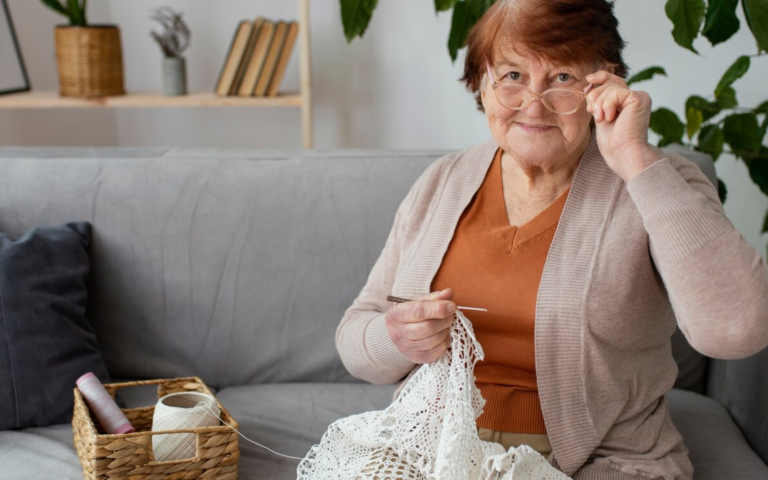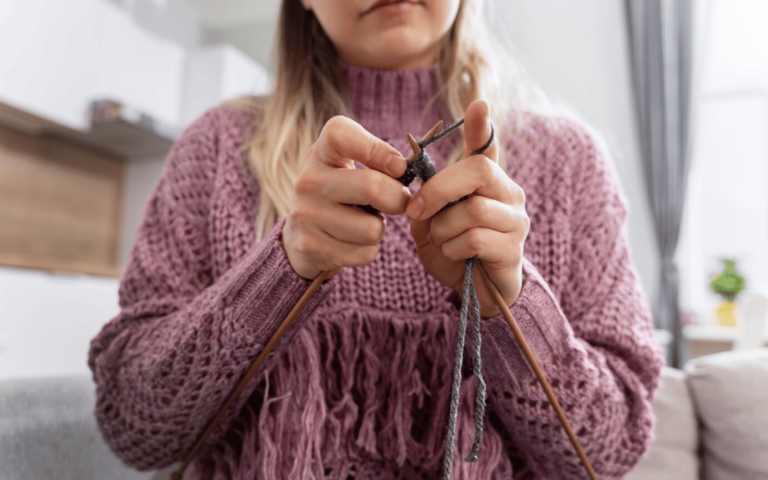Architectural Crochet – Discovering Innovative and Inspiring Designs in 2024
Architectural crochet represents a fascinating fusion of craft and structural design, transforming the traditional crochet technique into a form of artistic and architectural expression. This innovative approach extends the boundaries of crochet beyond clothing and decorative items to include large-scale installations, sculptures, and even functional architectural elements. The origins of architectural crochet trace back to traditional methods, with contemporary artists pushing the medium into new territories by scale, form, and space in ways previously unimagined.
The significance of architectural crochet in the contemporary art world is profound. It challenges perceptions of textile arts, traditionally viewed as domestic or feminine crafts, elevating them to the realm of architectural and artistic marvels. Artists and designers utilizing this method combine a deep understanding of crochet techniques with principles of architectural design, creating works that are not only visually captivating but also structurally sophisticated. The evolution of architectural crochet is marked by the creativity and innovation of artists who have the potential of yarn and thread to create complex, three-dimensional forms. These works often reflect a meticulous attention to detail and a deep appreciation for both the aesthetic and structural possibilities of the medium. As architectural crochet continues to gain recognition, it serves as a testament to the versatility and enduring appeal of crochet as a form of artistic. Architectural crochet is not just an art form; it is a bridge between the tactile and the conceptual, inviting viewers to reconsider the role of textile arts in the modern world. Through its blend of tradition and innovation, architectural crochet offers a unique lens through which to view the intersections of art, design, and architecture, marking a significant contribution to the landscape of contemporary art.
The Basics of Architectural Crochet
Architectural crochet is characterized by its use of crocheting techniques to create structures and forms that have architectural qualities. Unlike traditional crochet, which often focuses on flat and two-dimensional objects, architectural crochet volume, space, and three-dimensionality. This requires a deep understanding of both crochet techniques and architectural principles, allowing artists to construct works that can stand alone as sculptures or integrate with architectural environments.
The materials and tools used in architectural crochet are similar to those in traditional crochet but selected with a focus on durability, scale, and the desired structural qualities. Yarns may range from fine threads to thick, heavy strands, depending on the project’s requirements. Tools such as larger hooks and specialized equipment may be necessary to handle the scale and complexity of architectural projects. The choice of materials and tools is crucial, as they directly impact the work’s aesthetic, texture, and structural integrity.
Techniques unique to architectural crochet often involve advanced stitching methods and the incorporation of non-traditional materials. Artists may employ hyperbolic crochet techniques to create complex shapes and surfaces, or they may integrate wire, metal, or other non-fiber materials to enhance structural stability. The process is both creative and technical, requiring artists to envision their projects in three dimensions and plan meticulously to achieve the desired outcome. Learning the basics of architectural crochet opens up a world of creative possibilities. It allows artists and hobbyists alike to experiment with form, structure, and material in new and exciting ways. As one gains proficiency, the potential applications of architectural crochet expand, from creating intricate sculptures to designing large-scale installations that transform spaces and environments.
Historical Perspective of Architectural Crochet
The history of architectural crochet is a testament to the adaptability and enduring appeal of crochet as a craft. While crochet in its most traditional form has been practiced for centuries, the application of crochet techniques to architectural and sculptural forms is a relatively modern development. This evolution reflects broader trends in the art world, where boundaries between disciplines become increasingly blurred, and artists seek the new mediums and methods.
Early instances of architectural crochet can be seen in the works of pioneering artists who experimented with the medium beyond its conventional applications. These forerunners laid the groundwork for contemporary practitioners, demonstrating that crochet could be used not only for decorative purposes but also as a powerful tool for the artistic. Their innovative approaches to crochet challenged prevailing notions of craft and art, setting the stage for future of the medium’s potential.
The influence of traditional crochet on the development of architectural crochet is significant. Techniques that have been passed down through generations provide a foundation upon which artists build and innovate. The adaptability of crochet, with its ability to form complex shapes and textures, makes it an ideal medium for architectural concepts. As artists incorporate advanced techniques and new materials, the connection between traditional crochet and its architectural applications becomes a source of creative inspiration.
Key figures and artists in the evolution of architectural crochet have each contributed unique perspectives and techniques to the medium. From elaborate installations that envelop entire rooms to intricate sculptures that mimic natural forms, these artists have expanded the possibilities of crochet. Their work not only showcases the technical mastery of crochet but also illustrates its potential to convey complex ideas and evoke emotional responses. As architectural crochet continues to evolve, the contributions of these artists form a rich legacy that inspires new generations to look for the medium’s unlimited potential.
Architectural Crochet in Modern Art
In the realm of modern art, architectural crochet has emerged as a dynamic and innovative medium that challenges traditional boundaries between craft and fine art. Artists utilizing architectural crochet create works that are both visually stunning and conceptually rich, often addressing themes such as nature, geometry, and the built environment. These pieces not only showcase the aesthetic possibilities of crochet but also engage viewers in a dialogue about the nature of art and the role of textile mediums in contemporary artistic practice.
Notable architectural crochet projects have captured the attention of both the art world and the public, demonstrating the medium’s ability to transcend expectations. From immersive environments that envelop the viewer to detailed sculptures that invite close inspection, these works are characterized by their complexity and scale. Artists like Olek and Janet Echelman have gained international recognition for their ambitious crochet projects, which often incorporate elements of performance and public participation.
The impact of architectural crochet on public art and installations is significant. By bringing the medium into public spaces, artists have made architectural crochet accessible to a wider audience, fostering a greater appreciation for textile arts. Public installations often invite interaction, transforming passive viewers into active participants. This engagement with the community not only enhances the visibility of architectural crochet but also underscores its potential as a tool for social and cultural commentary.
The role of architectural crochet in modern art continues to evolve, as artists push the boundaries of the medium in new and exciting directions. Through exhibitions, installations, and collaborative projects, architectural crochet is gaining recognition as a versatile and powerful medium for artistic expression. As it continues to intersect with other disciplines and engage with contemporary issues, architectural crochet solidifies its place in the landscape of modern art, challenging perceptions and inspiring innovation.
Behind Architectural Crochet
The connection between architectural crochet and the fields of science and mathematics is both profound and multifaceted. Crochet, particularly in its architectural forms, often employs principles of geometry and topology, allowing artists and mathematicians alike to understand complex shapes and structures in tangible ways. This intersection has led to collaborations that bridge art and science, highlighting the educational and potential of architectural crochet.
Hyperbolic crochet serves as a prime example of this synergy. Discovered by mathematician Daina Taimina, hyperbolic crochet models allow for the physical representation of hyperbolic planes, a concept that is difficult to visualize using traditional mathematical methods. These models have not only provided valuable educational tools for teaching geometry but have also inspired artists to possibilities of mathematical forms through crochet.
The educational value of architectural crochet extends beyond the realm of mathematic to complex geometrical concepts. Through workshops, exhibitions, and academic research, architectural crochet has become a unique platform for interdisciplinary learning, engaging participants in hands-on activities that illustrate mathematical theories in an accessible and creative manner. This practical application of mathematical concepts encourages a deeper understanding and appreciation of both mathematics and crochet as mediums for exploration and discovery.
Moreover, the crocheting techniques involved in creating architectural pieces often require a precise understanding of mathematical ratios and structural integrity. Artists must calculate dimensions, angles, and densities to ensure their creations maintain the desired shape and stability. This analytical aspect of architectural crochet highlights the meticulous planning and mathematical skill underlying these visually engaging works.
The fusion of crochet with mathematical and scientific principles not only enriches the artistic value of the creations but also elevates the medium as a tool for education and innovation. By demonstrating the practical applications of mathematics in art, architectural crochet serves as a bridge between abstract concepts and tangible realities, fostering a multidisciplinary approach to learning and creativity. As such, architectural crochet represents a unique convergence of art, science, and mathematics, offering new perspectives and methodologies for exploring the natural and built world.
Architectural Crochet Techniques and Tutorials
Delving into the techniques specific to architectural crochet offers a fascinating glimpse into the complexity and versatility of this art form. Unlike traditional crochet, which primarily focuses on patterns and textures, architectural crochet demands a deeper understanding of form, structure, and the physical properties of materials. Techniques such as modular crochet, where individual pieces are created separately and then assembled, allow for the construction of larger and more complex structures. This method provides flexibility in design and facilitates the creation of intricate shapes that can be challenging to achieve through other means.
Advanced techniques in architectural crochet also involve the strategic incorporation of non-fiber materials to enhance structural stability. For example, artists may use wireframes as a base over which yarn is crocheted, creating forms that are both lightweight and robust. This hybrid approach combines the softness and texture of yarn with the strength of metal or plastic, opening up new possibilities for architectural applications of crochet.
One of the most critical aspects of architectural crochet is understanding how to tension and stitch patterns to achieve the desired shape and firmness. This may involve experimenting with different yarn weights, hook sizes, and stitching techniques to find the perfect combination for each project. Tutorials and workshops led by experienced practitioners can provide invaluable guidance for those looking to develop their skills in this area. For those interested in architectural crochet, numerous online resources and communities offer tutorials, patterns, and inspiration. These platforms not only provide practical instruction but also foster a sense of community among artists and hobbyists. Through sharing their experiences and challenges, participants can learn from each other and collectively push the boundaries of what can be achieved with architectural crochet.
Materials and Tools for Architectural Crochet
The choice of materials and tools is fundamental to the success of any architectural crochet project. The selection process is guided by the project’s specific requirements, such as the desired texture, durability, and flexibility. High-quality yarns that can withstand tension and maintain their shape over time are preferred for their ability to produce stable and long-lasting structures. Synthetic fibers, as well as natural ones with inherent strength like hemp or linen, are often chosen for their robust qualities.
In addition to traditional crochet hooks, architectural crochet may require specialized tools to manage the scale and complexity of the projects. Large hooks and custom-made implements can facilitate the handling of multiple strands of yarn or the construction of oversized elements. Furthermore, auxiliary materials like wires, frames, or stiffening agents may be employed to provide additional support and shape to the crochet pieces, enabling the creation of forms that defy gravity and exhibit architectural qualities.
Understanding the properties and potential of various materials and tools is a important skill for artists working in this medium. Experimentation and innovation in material choice can lead to groundbreaking works that challenge the conventional limits of crochet. The process of selecting materials and tools is thus not only a practical consideration but also a creative endeavor that significantly influences the project’s final outcome. The evolution of architectural crochet has been accompanied by advances in materials and tools, with manufacturers and artisans developing products specifically tailored to the needs of this niche. This ongoing development reflects the growing interest in architectural crochet and its establishment as a distinct and respected field within the worlds of art and design.
Architectural Crochet Projects and Inspiration
Architectural crochet projects span a wide range of applications, from sculptural artworks to functional design elements within architectural spaces. These projects often start with a conceptual vision that challenges the traditional boundaries of crochet, pushing the medium into new and unexpected directions. Inspiration can come from various sources, including nature, architecture, mathematics, and even personal narratives, reflecting the diverse interests and backgrounds of the artists.
One of the most captivating aspects of architectural crochet is its ability to mimic organic forms and patterns found in nature. Projects that replicate the intricate structures of coral reefs, the complex geometry of spider webs, or the undulating forms of sea creatures demonstrate the medium’s versatility and its potential for creating detailed and lifelike representations. These works not only showcase the technical skill of the artists but also offer a profound commentary on the beauty and complexity of the natural world.
In the realm of functional design, architectural crochet has been used to create unique interior elements such as room dividers, lighting fixtures, and wall coverings. These pieces blend aesthetic appeal with practicality, offering innovative solutions to design challenges. The tactile and visual warmth of crocheted elements can transform spaces, adding depth and character to both public and private environments. For those seeking to embark on their own architectural crochet projects, the key is to start with a clear concept and remain open to the process of discovery. Experimentation with materials, techniques, and forms is essential, as is a willingness to adapt and refine ideas based on practical considerations and creative insights. The journey from concept to completion is a rewarding experience, offering endless opportunities for personal artistic growth.
The Role of Architectural Crochet in Sustainable Design
Architectural crochet occupies a unique niche within the broader context of sustainable design. By utilizing materials that are eco-friendly and biodegradable, artists and designers can create works that are not only visually appealing but also environmentally responsible. The emphasis on handcrafting and the potential for repurposing and recycling materials align with the principles of sustainability, making architectural crochet a compelling medium for exploring eco-conscious design solutions.
Projects that incorporate upcycled yarns or fibers sourced from sustainable practices exemplify how architectural crochet can contribute to environmental stewardship. These initiatives not only reduce waste but also highlight the creative possibilities of reimagining and transforming discarded materials into art. The process of selecting eco-friendly materials encourages a mindful approach to art-making, emphasizing the importance of ethical and sustainable practices in the creative industries.
Beyond the choice of materials, architectural crochet can play a role in promoting sustainability through the themes and messages conveyed in the work. Projects that address issues such as conservation, biodiversity, and human impact on the environment can raise awareness and inspire action. Through its capacity to engage audiences in meaningful dialogue, architectural crochet becomes a powerful tool for advocacy and education in the context of environmental sustainability. The integration of architectural crochet into sustainable design projects also demonstrates the medium’s versatility and adaptability. Whether through the creation of functional items that reduce reliance on synthetic materials or through artworks that inspire reflection on our relationship with the natural world, architectural crochet offers a unique avenue sustainability in creative and impactful ways.
Architectural Crochet as a Community and Educational Tool
Architectural crochet has proven to be an effective medium forfostering community engagement and educational opportunities. Through workshops, collaborative projects, and public installations, it has the power to bring people together, fostering a sense of community and shared purpose. Participatory projects, in particular, can democratize the art-making process, allowing individuals of all skill levels to contribute to a collective work. This inclusivity not only enriches the project but also strengthens community bonds. In educational settings, architectural crochet serves as a hands-on tool for learning about geometry, design principles, and environmental sustainability. By integrating crochet projects into the curriculum, educators can offer students a unique way to engage with these subjects, encouraging creativity and problem-solving skills. The tactile and visual aspects of crochet make abstract concepts more accessible, providing a tangible context for learning.
Moreover, architectural crochet projects can serve as a platform for cultural exchange and social commentary. By involving participants from diverse backgrounds, these projects can highlight the richness of cultural traditions related to crochet and textiles, fostering mutual respect and understanding. Additionally, works that address social themes can provoke discussion and reflection, making architectural crochet a potent medium for addressing contemporary issues. The benefits of using architectural crochet as a community and educational tool are manifold. From enhancing learning outcomes to promoting social cohesion, the medium offers a versatile and impactful way to engage with a wide range of audiences. As the practice of architectural crochet continues to evolve, its potential to enrich communities and educational environments becomes increasingly apparent, underscoring the value of this innovative art form.
Challenges and Solutions in Architectural Crochet
Despite its many advantages, architectural crochet faces certain challenges, particularly related to scale, material limitations, and public perception. Large-scale projects require considerable time, resources, and technical skill, which can be daunting for individual artists. Moreover, finding materials that are both suitable for architectural applications and consistent with the artist’s vision can be challenging. The perception of crochet as a traditional or domestic craft may also pose obstacles to its acceptance in the broader art and design communities.
Solutions to these challenges often involve innovation, collaboration, and education. Artists have turned to unconventional materials and techniques to overcome limitations, experimenting with everything from recycled plastics to digital fabrication methods. Collaborations with engineers, architects, and other specialists can also provide valuable expertise, opening up new possibilities for ambitious projects. Educating the public and the art world about the potential of architectural crochet as a serious and versatile medium is crucial for changing perceptions and gaining broader acceptance.
Funding and support can be critical for realizing large-scale architectural crochet projects. Artists have successfully leveraged crowdfunding platforms, grants, and sponsorships to gather the necessary resources. Public and community-based projects can also attract support from local governments and organizations interested in promoting cultural and educational initiatives. The future of architectural crochet is promising, with emerging technologies offering new opportunities for innovation. Digital tools for design and fabrication are becoming increasingly accessible, allowing artists on complex forms and structures. As the field continues to evolve, the challenges it faces will likely spur further creativity, pushing the boundaries of what can be achieved with architectural crochet.
The Future of Architectural Crochet
The future of architectural crochet is bright, with artists and designers continuing to push the boundaries of the medium. As it gains recognition within the realms of art, design, and architecture, architectural crochet is poised to look for new territories, both conceptually and physically. The integration of new materials and technologies promises to expand the possibilities of what can be created, while collaborations across disciplines are likely to produce innovative and unexpected results. The growing interest in sustainability and community engagement also suggests that architectural crochet will continue to play a significant role in social and environmental initiatives. By leveraging the medium’s potential for reuse and recycling, as well as its capacity to bring people together, artists and designers can contribute to more sustainable and cohesive communities.
Educationally, architectural crochet offers a unique platform for interdisciplinary learning, blending art, science, and mathematics in engaging and accessible ways. As educators and practitioners seek these intersections, the medium will likely become an increasingly valuable tool for teaching and exploration. Architectural crochet represents a dynamic and evolving field that bridges traditional craft and contemporary innovation. Its future will be shaped by the creativity and vision of those who practice it, as well as by the broader cultural and technological changes that influence the world of art and design. As it continues to evolve, architectural crochet will undoubtedly continue to surprise and inspire, challenging our perceptions of what is possible with yarn and hook.
Integrating Architectural Crochet in Urban Spaces
In the bustling realms of urban architecture, the inclusion of architectural crochet has marked a transformative movement towards integrating softer, more tactile elements into the rigid environments of cities. This technique has begun to redefine public spaces, offering not just aesthetic enhancement but also functional benefits. Urban integration of architectural crochet involves the use of fiber arts to adorn cityscapes—ranging from park benches and bus stations to bridges and public building facades, each piece adding a layer of warmth and inviting interaction.
The movement’s origins trace back to small-scale community projects aimed at beautifying local neighborhoods while fostering a sense of ownership and pride among residents. These initial endeavors have evolved into substantial contributions to urban aesthetics, influencing both public and private developments. Cities like San Francisco and Stockholm have pioneered this integration, showcasing how crochet can provide not only visual delight but also practical functionalities such as shading, insulation, and even sound absorption, making bustling areas more pleasant and livable.
The process begins with community workshops where residents, guided by artists and architects, conceptualize designs that reflect local culture and history. These designs are then brought to life through the collective effort of community members, who engage in the crocheting. This participatory approach not only demystifies the process of urban development but also empowers individuals by involving them directly in the transformation of their environment.
Municipalities have observed a decrease in vandalism and neglect in areas featuring architectural crochet installations. The theory here is that when people participate in the creation or enhancement of a public space, they develop a vested interest in its upkeep and preservation. Moreover, these installations become landmarks of community creativity and resilience, often celebrated during city tours or cultural festivals, thus adding a unique charm and attracting tourists.
The materials used in urban architectural crochet are carefully selected for durability and environmental compatibility. High-grade synthetics that can withstand weather extremes and UV exposure are preferred to ensure longevity and maintain the visual integrity of the installations. Innovations in biodegradable yarns and recycled materials are also being explored to align with sustainable urban development goals.
Furthermore, the integration of architectural crochet in urban spaces serves as an educational platform. Schools and educational groups can participate in or visit ongoing projects, providing hands-on learning experiences about art, design, and community involvement. This educational aspect is vital, as it nurtures future generations who are conscious of and involved in their urban landscapes.
The scalability of incorporating architectural crochet into urban design demonstrates its versatility and potential for expansion. What began as localized projects can be adapted for broader urban renewal initiatives. Cities facing challenges like drab public transit systems or uninspiring public squares can look towards architectural crochet for a rejuvenating touch.
While challenges such as maintenance, public perception, and initial resistance from traditional urban planners exist, the overarching positive impact of architectural crochet on community dynamics and urban aesthetics is undeniable. As we move further into the decade, the fusion of traditional craft with modern urban design promises to enhance our cityscapes in profoundly impactful ways, making them not just spaces of transit but also of interaction, learning, and beauty.
This innovative approach reiterates that urban design does not always have to be forged from steel and concrete. Instead, it can be a harmonious blend of strength and softness, durability and delicacy, thereby transforming everyday environments into canvases of communal artistry and sustainable design. As architectural crochet continues to thread its way through the fabric of urban planning, it redefines what it means to live in and interact with our cities, making them feel more like homes knitted with care, creativity, and community involvement.
See More At: woolen8wonders.com

